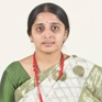
Sowmya K. N.
Work place: Department of ISE, JSS Academy of Technical Education, Bangalore, Karnataka, India
E-mail: kn_sowmya@rediffmail.com
Website: https://orcid.org/0000-0001-7212-8677
Research Interests: Image Processing, Image Manipulation, Image Compression, Computational Learning Theory
Biography
Dr. Sowmya received her doctoral degree in “Faculty of computer and Information Sciences” in the year 2020 from Visvesvaraya Technological University, Belgaum, Karnataka, India. She is working as an Assistant professor in the Department of Information Science and Engineering at JSS Academy of Technical Education, Bangalore affiliated to Visvesvaraya technological university. Her area of research includes Video and Image Processing, Image Forensics, Video forensics & Machine learning.
Author Articles
Medical Image Synthesis Using Variational Autoencoder and Generative Adversarial Networks
By Sinchana Ganesh Madhushree B. Sowmya K. N. H. R. Chennamma
DOI: https://doi.org/10.5815/ijem.2025.03.05, Pub. Date: 8 Jun. 2025
Nowadays, image synthesis has become essential in the medical field for lever- aging deep learning technique to improve decision- making. Our proposed research work combines Variational Autoencoders (VAEs) and Generative Adversarial Networks (GANs) to synthesize medical im- ages, enhancing diagnostics, medical training, and image analysis. The model presented combines a Discriminator, and a Variational Autoencoder to capitalize on the strengths of both VAEs and GANs. The Decoder is tasked with generating synthetic medical images, the Discriminator evaluates their distinguishing factor, and the VAE learns a probabilistic mapping from input to latent space, ensuring a structured representation of underlying medical features. The training process involves a decoder creating realistic medical images, a discriminator distinguishing real from synthetic ones, and a VAE capturing meaningful data variations in the latent space. Verified on the dataset sourced from the Kaggle. The model refines its parameters iteratively using a training loop, resulting in enhanced quality and variety of generated medical images. The proposed VAE- GAN model demonstrates its efficacy by generating diverse and realistic medical images. The structured latent space contributes to interpretability, making the images suitable for purposes like data augmentation, anomaly detection, and machine learning model training.
[...] Read more.Image Hashing Through Spatio-triad Relationship
By Sowmya K. N. H. R. Chennamma
DOI: https://doi.org/10.5815/ijcnis.2022.05.05, Pub. Date: 8 Oct. 2022
Authenticating the content of the digital image has profound influence in legal matters and in court rooms. Image forensics plays an important role towards it. Proposed approach helps to authenticate the original image by generating a content based image signature that is a unique fingerprint for the image. Our novel approach establishes spatio triad relationship among features and finds the centre of gravity or centroid of the same after indexing. Topology of the triad relationship for the content based low level feature descriptors is preserved through aggregation until single key feature is deduced which is a 128 bit signature hash value and represented in decimal form. Density of feature keypoints influences the centre of gravity which acts as a unique signature for the given image. Manipulated image cannot contribute to restore / regenerate the same signature. We have verified our authentication approach for standard benchmark image dataset like MICC-F220, Columbia Image Splicing Evaluation dataset and Image manipulation dataset from Friedrich Alexander University and have found satisfactory results for the same. Content based image signature obtained is used to verify authenticity of image and for retrieval of video from database. Content based image fingerprint generated can also be considered for embedding as a watermark.
[...] Read more.Other Articles
Subscribe to receive issue release notifications and newsletters from MECS Press journals